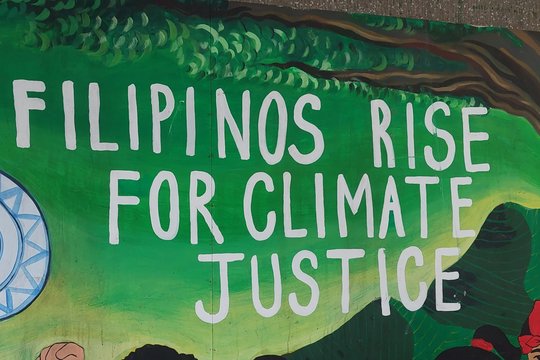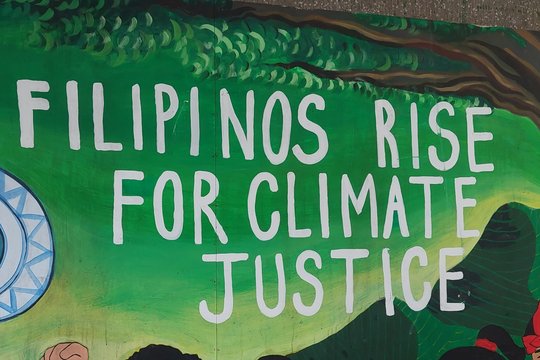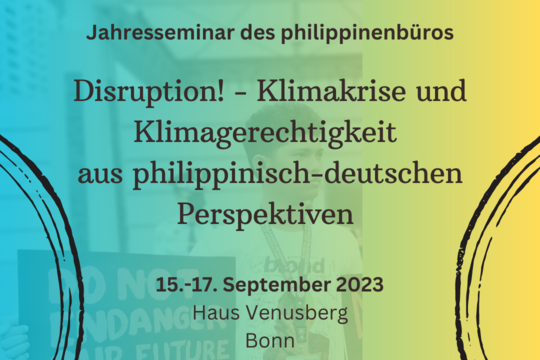During the first part of the session, speakers Zhao Zhong and Chen Taiyong talked about the broader context and their understanding of ‘Green BRI’. In the second part, the audience was invited to ask questions and enter a civil society dialogue between China, Southeast Asia and Europe.
Zhao Zhong of Green Camel Bell, chin. 绿驼铃, an organisation dedicated to environmental protection from Gansu, started his presentation with a brief historical background of the BRI, which was first introduced in 2013. Zhao explained the concept of ‘Green BRI’ as being related to the Chinese government’s efforts to support the goal of sustainable development in BRI partner countries.
He introduced the audience to recent policies pertaining to ‘Green BRI’, e.g. the 2019 Green Investment Principle (GIP) for the Belt and Road Initiative, chin. 一带一路绿色投资原则, or the 2022 Guidelines for Ecological Environmental Protection of Foreign Investment Cooperation and Construction Projects, chin. 对外投资合作建设项目生态环境保护指南.
Zhao emphasized the tremendous demand for civil society participation in ‘Green BRI’ projects. BRI projects provided many opportunities as well as challenges. Zhao stressed the importance for Chinese BRI stakeholders to follow international guidelines, national laws and norms. These legitimize a civil society engagement in BRI projects and ‘Green BRI’, particularly through policy advice (e.g. information disclosure requirements), bridging (e.g. facilitating stakeholder dialogues), project monitoring (e.g. towards social justice) and international leverage (e.g. based on capacity building). Zhao elaborated on these civil society engagements with regard to Article 21 of the 2012 Green Credit Guidelines, chin. 绿色信贷指引, and the aforementioned GIP for the BRI.
According to Zhao Zhong, an important task for NGOs is policy advocacy. However, NGOs can also function as a bridge between Chinese investors and the communities of the host countries by transmitting perceptions of risk factors. NGOs can facilitate the understanding of green investment policy frameworks and encourage stakeholder dialogue and capacity building.
Furthermore, NGOs can function as watchdogs by monitoring the projects, challenging the corporate actors’ credibility, altering the investor or company to avoid or reduce project-level risks or by introducing alternative demands to shift their investment strategies. NGOs can also leverage corporate access to global capital internationally, they can get involved in Green Investment Diplomacy, expand international laws and uphold ‘Green BRI’ commitments.
Based on a power plant case from Turkey, Zhao Zhong pointed to the differences between the label ‘Green BRI’ and the realities on the ground in a BRI partner country. He followed with three recommendations: 1) Civil society always needs to look behind the surface of a project and question whether projects are actually ‘green’. For instance, Turkish environmental groups collected opinions from around communities and sent letters to Chinese stakeholders. 2) The ‘Green BRI’ can only be realized if the focus is shifted from coal and solutions causing deforestation to solar and wind power as well as people’s livelihoods. 3) Continuous education for the public, decision-makers, and investor is essential. Green Camel Bell has been active in publishing handbooks for Chinese investors on sustainable development.
Chen Taiyong of Sichuan Haihui Poverty Alleviation Service Center, chin. 四川海惠助贫服务中心, an organisation dedicated to rural poverty alleviation and the sustainable development of rural communities, followed as the second speaker. He introduced ‘Green BRI’ projects that have succeeded in realizing sustainable development measures: the Nairobi-Malaba railway in the case of plant conservation, river protection and wildlife migration, and the China-Laos Railway in the case of plant conservation and community medical services.
However, Chen also mentioned prevailing criticism of the implementation of BRI projects: the lack of transparency, ineffective information reporting and insufficient stakeholder engagement. Therefore, Chen sees several roles for civil society organisations in ‘Green BRI’, e.g. stakeholder dialogues and capacity building for Chinese enterprises for responsible and green investments.
Chen Taiyong went on to ask how a sustainable ‘Green BRI’ could be ensured and introduced examples of Chinese civil society organisations. His organisation is active in community development projects in Northern Thailand, implementing rural teacher plans and strengthening women and youth development. The Global Environmental Institute (GEI), chin. 永续全球环境研究所, for instance promotes biogas technology in Laos for energy production and agriculture. Organisations like GEI have extensive experience in implementing community and environmental management projects and thereby promoting sustainable livelihoods in BRI countries with Chinese companies.
Chen stressed the need for partnerships between Chinese civil society organisations and Chinese enterprises as well as between Chinese and local civil society actors. According to him, more patience and understanding is needed from international communities concerning the behaviour of Chinese organisations and their modes of work. Different work methods sometimes lead to a lack of transparency, which causes criticism. There are numerous Chinese civil society organisations in China. When they, local communities and organisations in BRI partner countries as well as Chinese enterprises work together a sustainable development can be achieved.
The speakers’ inputs were followed by an open discussion on a variety of issues: the China International Development Cooperation Agency’s (CIDCA), chin. 国家国际发展合作署, role in formulating environmental guidelines, its cooperation with civil society organisations and funding for them; the Chinese debate among environmental civil society organisations on corporate greenwashing; the responsiveness of Chinese enterprises towards environmental advocacy work and activist letters; the difference in private and state-owned companies in environmental management.
Tanja Gref









